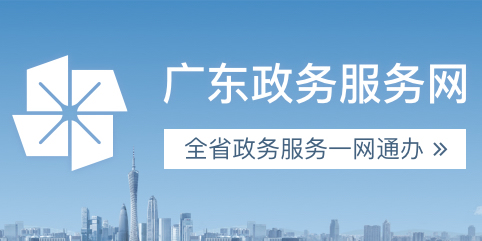Based on Yue Cai Shui [2019] No. 2, Yue Cai Shui [2020] No. 29 and taking in consideration of the local conditions, the nine Pearl River Delta cities have formulated their own interim measures for the administration of IIT subsidies, which further clarify the scope and standards for eligible talents, the calculation method of financial subsidies, and the procedures for processing applications and granting subsidies in the respective cities. In the following section, we will go into more details on the implementation measures in different cities by taking Guangzhou and Shenzhen as examples.
(One) Guangzhou
In August 2019, the Guangzhou Municipal Finance Bureau, Guangzhou Municipal Science and Technology Bureau, Guangzhou Municipal Human Resources Social Security Bureau, Guangzhou Tax Service, State Taxation Administration issued the Interim Measures of Guangzhou for Administration of Financial Subsidies under Preferential Individual Income Tax Policies in Guangdong-Hong Kong-Macao Greater Bay Area (Sui Cai Gui Zi [2019] No. 5). Sui Cai Gui Zi [2019] No. 5 came into force on 1 January 2019 and was implemented on a trial basis for one year, Sui Cai Gui Zi [2019] No. 5 shall apply where the tax years for which the applicant applies for financial subsidies are within its validity. Based on the experience of implementing the GBA IIT preferential policy for year 2019, the four departments released the Measures of Guangzhou for Administration of Financial Subsidies under Preferential Individual Income Tax Policies in Guangdong-Hong Kong-Macao Greater Bay Area (Sui Cai Gui Zi [2021] No. 1) (hereinafter referred to as " Circular 1") with the following details:
1. The requirements for eligible talents: in Guangzhou, eligible high-end talents and critically-lacking talents are listed in the respective talent catalogues, and the catalogues will be reviewed and renewed regularly. In addition, as stipulated in Circular 1, the applicant shall work in Guangzhou for a minimum of 90 days during the tax year for which he or she applies for the financial subsidies.
2. Calculation method of financial subsidies: In light of the principles set by on Yue Cai Shui [2020] No. 29, Guangzhou has introduced the following formulas to compute the financial subsidies:
(a). Financial subsidy=∑ (IIT balance by category each year × the proportion of IIT paid by category);
(b). The proportion of IIT paid by category = the amount of IIT paid by category in Guangzhou each year ÷ the amount IIT paid by category in China each year.
(c). IIT balance by category in each year:
(d). For individual whose nationality, residency status or overseas permanent residency status changes during the year for which he or she applies for the financial subsidies, the amount of financial subsidies shall be prorated with reference to the time when the relevant change occurs.
(i) Comprehensive income categories
- Resident comprehensive income categories (including four categories i.e. wages and salaries, incomes from provision of independent personal services, author’s remuneration and royalties): the annual IIT balance = the amount of IIT paid on comprehensive income - the amount of taxable comprehensive income × 15%;
- The category of wages and salaries of non-residents: the annual IIT balance = the amount of IIT paid on wages and salaries - the amount of taxable income from wages and salaries × 15%;
- The category of income from provision of independent personal services of non-residents: the annual IIT balance = the amount of IIT paid on independent personal services - the amount of taxable income from independent personal services × 15%;
- The category of author’s remuneration of non-residents: the annual IIT balance = the amount of IIT paid on author’s remuneration - the amount of taxable income from author’s remuneration × 15%;
- The category of royalties of non-residents: the annual IIT balance = the amount of IIT paid on royalties - the amount of taxable income from royalties × 15%;
(ii) The category of income from business operation:
- the annual IIT balance = the amount of IIT paid on income from business operation - the amount of taxable income from business operation × 15%
(iii) The category of subsidies obtained by being enlisted in approved talents projects:
- the annual IIT balance = the amount of IIT paid on subsidies obtained by being enlisted in approved talents projects - the amount of taxable income from subsidies obtained by being enlisted in approved talents projects × 15%;
(iv) If the applicant has changed his or her nationality, resident status or overseas permanent residency status in the tax year for which he or she applies for the financial subsidies, the amount of financial subsidies shall be prorated based on the following formula:
- Financial subsidy=∑ (IIT balance by category each year × the proportion of IIT paid by category × period factor);
- Period factor = taxable income for the period when the individual is eligible for the financial subsidy ÷ annual taxable income
3. The in-charge departments, application timeline, and the approval procedures for financial subsidies
(a). In-charge departments: Individual applicants or withholding agents can submit their applications for financial subsidies in the online system of the People’s Government of Guangdong Province. Applications from overseas high-end talents in Guangzhou shall be handled by Guangzhou Municipal Science and Technology Bureau, the Science and Technology Department of the respective district will conduct the preliminary review and the Guangzhou Municipal Science and Technology Bureau will conduct the second review. And those applications from critically-lacking talents in Guangzhou shall be handled by Guangzhou Municipal Human Resources and Social Security Bureau, the Human Resources and Social Security Department of the respective district will conduct the preliminary review and the Guangzhou Municipal Human Resources and Social Security Bureau will conduct the second review.
(b). Application timeline: from 1 July to 15 August in the following year.
Regarding the financial subsidies for the tax years from 2020 to 2022, if an eligible applicant fails to submit the application within the prescribed time limit, a supplementary application can be made during the subsidy application period in the next year. If it is overdue again, it shall not be accepted or subsidized. As for financial subsidies for tax year 2023 and onwards, there will be no supplementary application period.
(c). The payment procedures for financial subsidies: After the Guangzhou Municipal Science and Technology Bureau and the Guangzhou Municipal Human Resources and Social Security Bureau completed the second review of the applications, the relevant bureaus shall form a final list of the applicants who are granted with the financial subsidies, and the financial subsidies will be directly allocated to the personal accounts of the respective applicants through the centralized payment system of the municipal treasury. If the applicant disagrees on the amount of his or her financial subsidies, he or she can file an application for recalculation of the subsidies on the website of Guangdong Government Service within 30 days after the subsidies are approved. The in-charge department shall re-examine the application, and if the recalculated amount differs from the one initially granted, the relevant department shall conduct adjustment accordingly.
(Two) Shenzhen
In March 2020, Shenzhen Municipal Human Resources and Social Security Bureau, Shenzhen Municipal Science and Technology Innovation Committee, Shenzhen Municipal Finance Bureau, and Shenzhen Tax Service, State Taxation Administration jointly issued ”Notice on the implementation of the GBA preferential IIT policy” (Shen Ren She Gui [2020] No.4, “HRSS 4”). Related departments as mentioned above shall formulate corresponding implementation policies as according to the local situation in Shenzhen. In June 2020, Shenzhen Municipal Human Resources and Social Security Bureau, Shenzhen Municipal Science and Technology Innovation Committee and Shenzhen Municipal Finance Bureau also jointly issued “Guidelines for the application of IIT subsidies for overseas high-end talents and critically lacking talents in Shenzhen for Tax Year 2019 (“the Application Guideline”) to further explain the provision of “HRSS 4” and to provide guidance on the application process, which mainly includes:
1. The requirements for eligible talents:
The requirements for eligible overseas high-end talents and critically lacking talents is specified in Shenzhen (for details, please refer to the section of "Standards of Talent" section below), and the application should be made by enterprises and other institutions registered in Shenzhen. Besides, as according to the regulation, the applicants shall work in Shenzhen for a minimum of 90 days during the tax year, and IIT paid in Shenzhen for that tax year should exceed 15% of taxable income. If the applicant is a foreign national, the annual taxable income shall reach RMB500,000 or above.
2. Calculation method of financial subsidies
The financial subsidy = the amount of IIT paid – the amount of estimated IIT; and
(a). The amount of IIT paid refers to IIT paid in accordance with the IIT Law and regulations derived from income such as: ① wages and salaries; ②income from provision of independent personal services; ③income from author’s remuneration; ④income from royalties; ⑤income from business operations; and ⑥income from subsidies obtained by being enlisted in approved talents projects. The paid IIT amount includes any overpayment or underpayment settled through the annual reconciliation filing.
(b). The amount of estimated IIT refers to the tax payable amount as calculated in accordance with Hong Kong tax law. The subsidized tax amount for the year of assessment 2019 shall be calculated based on the standard tax rate method. After the first year, one can choose the standard tax rate method or progressive tax rate method for calculation.
· Standard tax rate method. The amount of estimated IIT = taxable income of the taxpayer in Shenzhen ×15%.
· Progressive tax rate method. Tax payable is calculated using the taxpayer’s chargeable income (excluding the tax exemption conditions, the non-cash benefits and expense reimbursement under Hong Kong law) according to the methods set by Hong Kong tax law.
(c). If the estimated tax amount is not less than the amount of tax paid, applicants do not need to submit application.
3. The in-charge departments, application timeline, and the approval procedures for financial subsidies
(a). In-charge departments: The subsidy application is handled, reviewed, granted by departments designated by the people’s government of each district, the Administrative Committee of Dapeng New Area, Qianhai Shenzhen-Hong Kong Modern Service Industry Cooperation Zone and Shenzhen-Shantou Cooperation Zone. The whole application process is implemented online with no need to submit the paper material to the counter.
(b). Application Timeline: The annual application guidelines of Shenzhen Municipality will be issued by Shenzhen Municipal Human Resources and Social Security Bureau, Shenzhen Municipal Science and Technology Innovation Committee (Municipal Bureau of Foreign Affairs) and Shenzhen Municipal Finance Bureau each year. The 2019 application was submitted from August 1st to August 31st (extended to September 15th) 2020.
(c). The payment procedures for financial subsidies: The procedures include: enterprise registration, individual application, enterprise review, window acceptance, eligibility review, subsidies accounting, subsidy granting and objection handling. (for details, please refer to “Application Procedure "section below).
※ FAQs
Question 1. How to calculate the threshold of “the applicant’s 90 accumulative working days in Guangzhou/Shenzhen during a tax year”?
Answer: In Guangzhou, as stipulated in Item 2,Article 8 of Circular 1, one of the requirements for the applicants to apply for financial subsidies is: the applicant shall work or be employed by enterprises and other institutions registered in Guangzhou during the tax year, or alternatively provide independent personal services in Guangzhou, or conduct production or business operation, work in Guangzhou for a minimum of 90 days during the tax year, and pay IIT in Guangzhou according to law. Article 13 of Circular 1 further stipulates that working days in Guangzhou includes the days for the applicant’s actual working days in Guangzhou, and onshore and offshore public holidays, personal leave, and training days during his/her working in Guangzhou. If the applicant stays in Guangzhou for less than 24 hours in a day, he/she will be regarded as having half working day in Guangzhou.
As for Shenzhen, the interpretation of working days should be in accordance with the rules and regulations adopted by the relevant governmental departments of Shenzhen.
Question 2. For oversea high-end talents and critically-lacking talents who are China tax resident individuals, according to the provisions of the China IIT law, the annual bonus and equity incentive income obtained are not required to be combined with the comprehensive income of the current year but be calculated and taxed separately for IIT purpose before 31 December 2021. Will the aforementioned annual bonus and equity incentive income be regarded as comprehensive income while computing the IIT difference and the financial subsidies? How to calculate the financial subsidies for oversea high-end talents and critically-lacking talents who are non-China tax resident and receive multiple-month bonus and equity incentive income?
Answer: According to the Notice of the Ministry of Finance and the State Taxation Administration on the Connection of Preferential Policies after the Revision of the Law on Individual Income Tax (Caishui [2018] No. 164), the annual bonus and equity incentive income obtained by tax residents shall be calculated and taxed separately. The State Taxation Administration’s Public Notice on Handling the Individual Income Tax Annual Reconciliation Matters for the Year 2019 and Year 2020 (PN [2019] No. 44 and PN [2021] No.2 respectively) also stipulate: the purpose of the annual reconciliation filing is to reconcile and settle the IIT payable or refundable on comprehensive income of the current year. It does not involve the previous or subsequent years, income in other categories such as lease of property, and the annual bonus, etc., which taxpayers choose not to combine as comprehensive income for IIT calculation.
Since the annual bonus, equity incentive income of overseas high-end talents and critically-lacking talents who are resident individuals are subject to the comprehensive income tax table when calculating the IIT, they are in the nature of comprehensive income. According to Article 16 of Circular 1, when calculating IIT difference and financial subsidies, the above income is classified as sub-items of resident individuals’ comprehensive income. Similarly, the multiple-month bonus and equity income for overseas high-end talents and critically-lacking talents who are non-China tax resident individuals should be combined with the income from wages and salaries when calculating the IIT difference and financial subsidies.
The relevant treatment in Shenzhen is consistent with the above principles.








